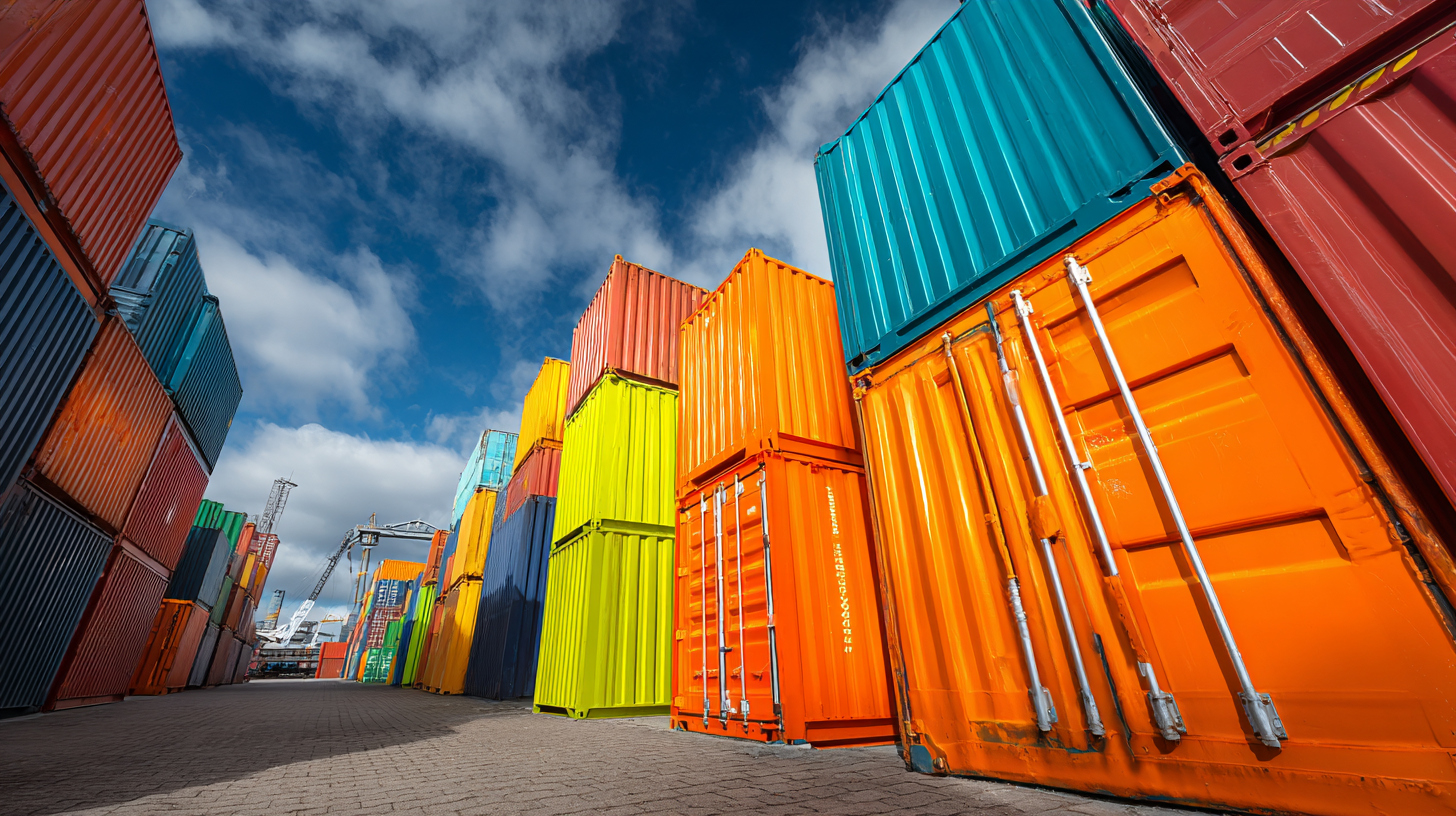Transform Your Space: The Rise of Shipping Containers for Storage and Their Eco-Friendly Benefits
 In recent years, the innovative use of shipping containers for storage has gained significant traction as both a practical solution and an eco-friendly alternative to traditional storage options. As urbanization continues to rise and space becomes increasingly scarce, many individuals and businesses are turning to these durable, modular structures to meet their storage needs. Not only do shipping containers offer a secure and versatile space for storing goods and materials, but they also promote sustainability by repurposing materials that would otherwise contribute to waste. This trend reflects a growing awareness of environmental concerns and the desire to adopt greener practices, making shipping containers for storage a smart choice for those looking to transform their spaces responsibly.
In recent years, the innovative use of shipping containers for storage has gained significant traction as both a practical solution and an eco-friendly alternative to traditional storage options. As urbanization continues to rise and space becomes increasingly scarce, many individuals and businesses are turning to these durable, modular structures to meet their storage needs. Not only do shipping containers offer a secure and versatile space for storing goods and materials, but they also promote sustainability by repurposing materials that would otherwise contribute to waste. This trend reflects a growing awareness of environmental concerns and the desire to adopt greener practices, making shipping containers for storage a smart choice for those looking to transform their spaces responsibly.
From residential backyards to commercial sites, the adaptability and aesthetic potential of shipping containers continue to redefine storage solutions while promoting a more sustainable future.
Benefits of Using Shipping Containers for Eco-Friendly Storage Solutions
The use of shipping containers for storage has gained popularity not just for their practicality but also for their eco-friendly benefits. These robust structures, originally designed for transporting goods across the globe, can be repurposed effectively into storage solutions. One significant environmental advantage is their contribution to recycling efforts. By utilizing these containers, we are giving new life to materials that would otherwise contribute to landfill waste, thus reducing resource consumption and promoting sustainability.
Moreover, shipping containers offer exceptional energy efficiency. Their durable, insulated design helps maintain stable temperatures, reducing the need for energy-intensive climate control systems. This quality makes them ideal not only for storage but also for creative solutions like pop-up shops or temporary living spaces that minimize carbon footprints. Furthermore, containers can be modified with solar panels and green roofs, enhancing their eco-friendliness while providing versatile functionality. As the world shifts towards sustainable practices, shipping containers emerge as a resourceful choice for storage, reflecting an innovative approach to environmental consciousness.
Transform Your Space: The Rise of Shipping Containers for Storage
This chart illustrates the growing trend of using shipping containers for eco-friendly storage solutions, showcasing the various benefits that contribute to their rising popularity.
Exploring the Cost-Effectiveness of Shipping Container Conversions
The trend of using shipping containers for storage solutions has gained significant traction, and one of the key advantages lies in their cost-effectiveness. Converting used shipping containers into storage units or functional spaces can be dramatically cheaper than traditional building methods. With lower material costs and the ability to repurpose an entire structure, businesses and individuals can save significantly on both labor and materials. Additionally, the durability of containers means reduced maintenance expenses over time, making them a financially savvy choice for long-term storage needs.
Moreover, the adaptability of shipping containers adds to their economic appeal. They come in various sizes and can be easily modified to suit specific storage requirements, whether for personal use or small businesses. This flexibility not only allows for custom solutions but also eliminates the need for extensive renovation or construction permits typically associated with conventional buildings. Consequently, as more people seek practical and affordable alternatives, shipping container conversions rise as a smart investment, blending functionality with economic efficiency.
Transform Your Space: The Rise of Shipping Containers for Storage and Their Eco-Friendly Benefits - Exploring the Cost-Effectiveness of Shipping Container Conversions
| Dimension | Standard Size (ft) | Average Cost ($) | Eco-Friendly Benefit |
|---|---|---|---|
| Small Container | 10 | 1,500 | Recycled Material Usage |
| Medium Container | 20 | 3,000 | Reduced Carbon Footprint |
| Large Container | 40 | 5,000 | Energy Efficiency |
| Extra Large Container | 45 | 6,500 | Waste Reduction |
| High Cube Container | 40 | 5,500 | Space Optimization |
Sustainability Metrics: How Shipping Containers Reduce Carbon Footprint
The growing trend of using shipping containers for storage is not only a practical solution for space management but also an eco-friendly alternative that significantly reduces carbon footprints. By repurposing these containers, individuals and businesses can diminish reliance on traditional building materials and reduce emissions associated with new construction. This initiative aligns with the broader sustainability metrics being adopted globally, as organizations increasingly recognize the importance of reducing their environmental impact.
Sustainability in the shipping industry is evolving, with alternative fuels and innovative technologies being explored to minimize emissions from maritime transport. These developments complement the use of shipping containers, as companies increasingly commit to environmental practices. Such measures not only improve ESG performance but also contribute to a greener supply chain, demonstrating that storage solutions can be both economically viable and ecologically responsible.
Innovative Uses of Shipping Containers in Urban Spaces: Case Studies
Shipping containers have emerged as a versatile solution for urban spaces, showcasing innovative uses that extend far beyond mere transportation. In cities like Los Angeles, shipping containers are being repurposed into pop-up shops and eateries, fostering vibrant marketplaces that attract locals and tourists alike. These modular units offer a cost-effective and durable alternative for entrepreneurs looking to establish a presence in bustling neighborhoods without the financial burden of traditional retail spaces. This trend not only stimulates local economies but also promotes community engagement through creative designs and organized events.

In addition to commercial applications, shipping containers are making a significant impact in addressing housing shortages. In cities such as Amsterdam, developers have transformed shipping containers into affordable, modular living spaces, providing an eco-friendly solution to urban housing crises. These container homes are not only sustainable but also scalable, allowing for rapid setup and adaptability to various urban landscapes. By utilizing shipping containers, cities can repurpose existing materials, thereby reducing waste and environmental impact while fulfilling essential housing needs, showcasing an innovative approach to urban living.
Regulatory Guidelines for Transforming Shipping Containers into Livable Spaces
Transforming shipping containers into livable spaces requires navigating a complex web of regulatory guidelines that vary significantly by location. Since November 2017, many initiatives have emerged to help potential homeowners understand the legalities involved in this innovative housing solution. It’s crucial to obtain the necessary permits and comply with local zoning laws to ensure that the container home meets safety and livability standards. In regions like South Africa, creative designs are often realized with local council approval, while others, such as in Spain, require a thorough understanding of planning permissions to successfully convert these containers into homes.

Before repurposing shipping containers, it's essential to be aware of potential hazards associated with their original cargo. Containers must be thoroughly cleaned and inspected to eliminate any residual toxins. Additionally, following the international guidelines outlined in the Safety of Life at Sea (SOLAS) ensures that standards for construction and safety are met, enabling these unconventional homes to provide not just an aesthetic appeal, but also a secure living environment. As the popularity of container homes continues to rise, individuals are encouraged to become informed and proactive in understanding the regulatory landscapes that govern their construction.

